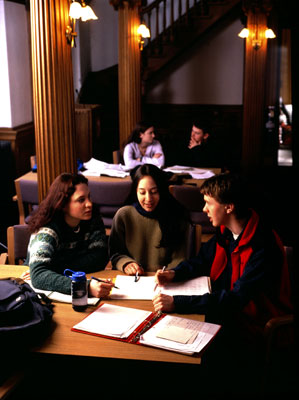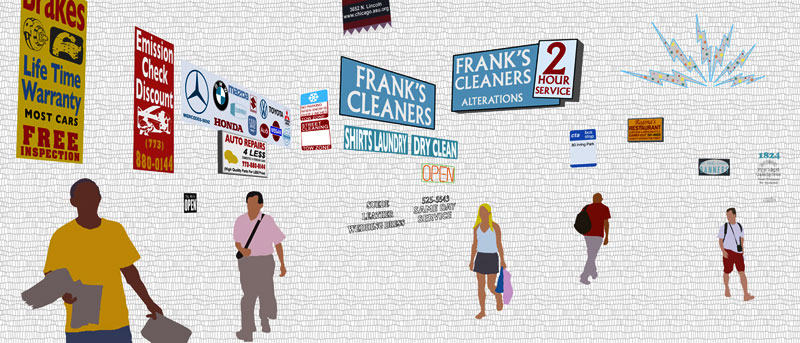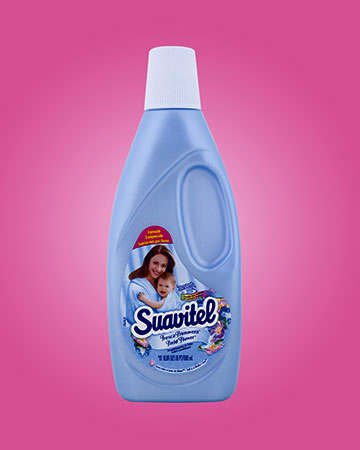My fourth post is going to keep with the introspective nature of the last one. While the previous post dealt with the changing nature of socio-politically motivated art, this post will address the more concrete issue of the medium of art. This is something I've been thinking about for several years and have found myself going through many phases in my thinking and attitude towards it. I have a feeling that my trajectory isn't all that different from many other artists working in photo-centric art today.
Let me back up a little and explain how and why I got into photography in the first place. I was brought up in a very secular, scientific household. Both my parents are doctors and my younger brother recently followed in their footsteps. My grandfather was an engineer and my grandmother a technical drawer so logic and the empirical process were heavily valued. This isn't to say, however, that creativity wasn't encouraged.
My grandfather was a serious amateur photographer beginning in the early 1930s in Germany. He owned Leica's and Rolleiflexes and used them continuously. On top of being a meticulous technician, he was a pretty good image maker as well. He ended up working for Messerschmitt, the German aviation company during WWII which is where he met my grandmother. He was fortunate for many reasons, but the fact that his mother was French allowed him to survive the war without being forced into the Nazi party (something he dreaded). His photographs of the time depict a dark, difficult, but fascinating period in my family history. They also speak to his skill with the camera.
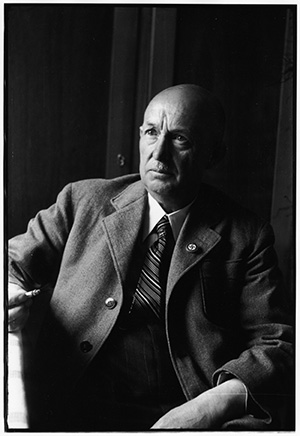
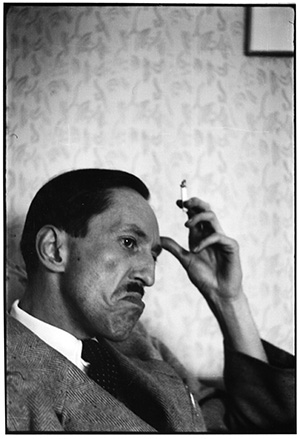
My father was also a serious amateur photographer and was largely responsible for my personal interest in cameras as a child. He bought me my first two cameras: a plastic Kodak Instamatic 126 when I was nine, and a Pentax K1000 when I was eleven.
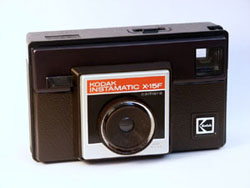
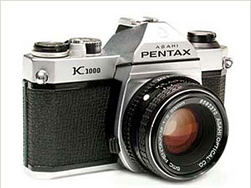
The point of all this personal background is to show how I gained entry into the creative world. I was not particularly adept at any of the traditional arts. I couldn't draw very well. I was even less skilled with a paint brush. My efforts in a soapstone carving class in summer camp were mediocre at best. My dexterity was not a fluid creative outlet for me, but I still had an eye for visual creativity. The camera offered me this outlet.
I began my professional creative life as a photographer's photographer. I identified myself as a photographer and I embraced the medium with all it's mystique and romanticism. I worked primarily commercially and journalistically in the 1990s while doing my own picturesque black and white work on the side that I sold to Vermont tourists. Looking back, I can see that my strong adherence to the medium was largely a result of my own insecurity and intimidation by other artistic media.

I entered Columbia College Chicago's MFA program in 2000 because I was growing restless in the commercial field. I wanted to see what else I was capable of, knowing full well that I could return to commercial photography if it didn't work out. I was initially shocked at the lack of technical knowledge among my fellow grad students. They seemed to have plenty of creative experience but little technical instruction. At first, I didn't like this, but I quickly realized that they were thinking very differently from the way I had been while working commercially. I was now encouraged to abandon the fetish of the technical and consider image-making a cerebral endeavor. Fortunately, at this point, I had a solid arsenal of technical skills to work with.
It was this shift from a technical emphasis to an expressive one, paired with a couple of classes in Photoshop, that began the loosening of my adherence to the photographic medium. With the expression of ideas first and foremost in my mind, what did it matter what medium I chose for a specific project? Photography is great at some things but terrible at others. Each medium has it's strengths and weaknesses so why not take advantage of the strengths of those mediums that are not photography?
Another critical event that helped push me further into multi-media was a request for design from the Chicago Transit Authority in 2006. The CTA has been working on a long term revitalization project that has seen the renovation and modernization of dozens of train stations around the city. They have a sizable art budget and were asking for designs from three different artists per station. The requirements were like nothing I had ever dealt with before. The piece had to last 100 years which meant that it would have to be made out of tile and glass. Photographs were out of the question (although Jon Gitelson proved me wrong on that one). Essentially, I had to come up with a design for a mosaic!
My design ended up being photo-based, where snap shots of the area outside of the station were translated into color fields. I reduced the exterior environment to show only the people and the signs of the businesses, most of which were still locally owned but were fading quickly.
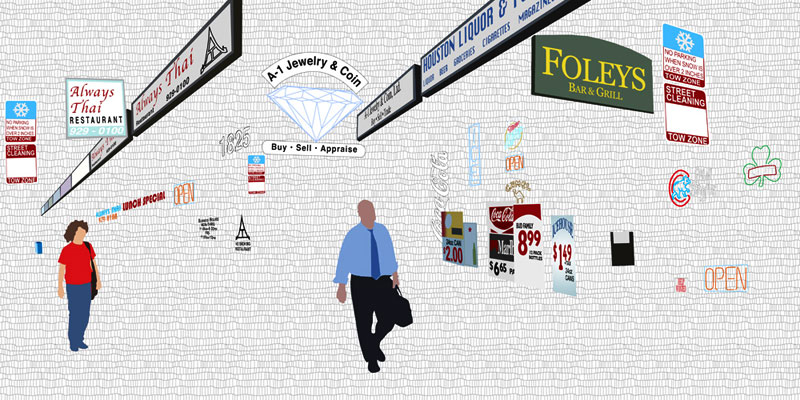
The design was ultimately rejected due to conflicts of interest between the companies who advertise with the CTA and the brands and businesses represented in my proposed mosaics. The lawyers did this one in, but I am looking for another location to do this. It could be done almost anywhere.
Around the same time, I started working on the Compare to… project that used photography but the final result really wasn't a photograph at all. The background was digitally inserted to give an advertising/graphical look to the work. These do not function like the window-on-the-world we are used to interacting with when we look at traditional photography. They are more akin to graphic design in the way they represent the subject. Of course, the photographic material within the piece still implies that the subject actually existed in front of the camera, to some degree at least.
Currently, I am in an odd place creatively. I'm trying to finish up some of my older projects while simultaneously experimenting with some new ideas. There are two, among many, that I am working on right now that have sent me in opposite directions. One of them takes me further from photography and into 3D/objects/sculpture or whatever you'd call it these days. The idea grew out of the Compare to… project which focuses attention on the packaging of products, and The Untitled Project where text is paired with an image. The idea is to aestheticize the shipping crate to make it the object of desire, much the way product packaging works. Secondly, I am working with the idea of pairing words with the objects as a departure from pairing words with images.
Much of this work is still in progress so I'm withholding a little here, but a significant amount of credit for my 3D visualization goes back again to technology. On a recommendation from a friend, I downloaded a free 3D rendering software from Google called Sketchup. It took me about a half hour to figure out the basics and I was rendering away in no time. It's not terribly sophisticated but there is a high-powered version for architects and designers, and I don't really require that level of precision for visualizing what I'm about to build.
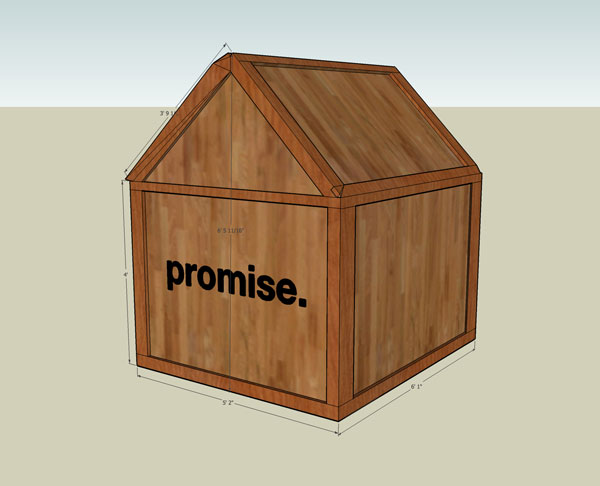
At the moment, I am loving working with wood and with objects. There is a different type of interaction people have with objects compared to images and I'm excited to explore those possibilities. I'm not going into deep detail here because much of this isn't presentable yet. The images I have here are from the earlier stages of the process but I should have more posted on my website by the end of January if all goes well.
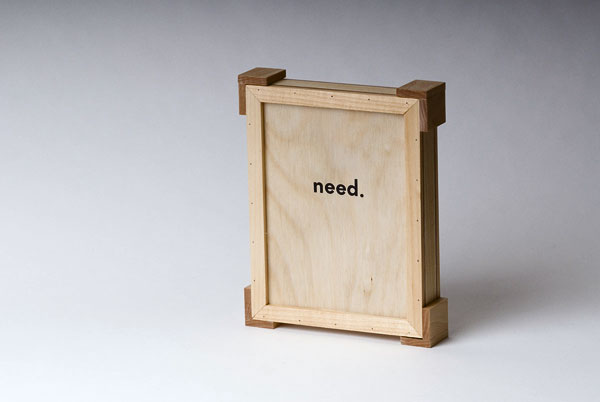
At the same time, I am working on sketches of another idea that is so purely photographic that it verges on the mundane (sometimes that's good, sometimes that's bad). I have spent a lot of time in Europe over the past several years and I've been intrigued by the amount of advertising geared toward the pedestrian compared to the U.S.. I photographed Mr. and Mrs. Smith Go to Paris in 2005 and discovered that more and more of the street level advertising was designed to change quickly. There are rotating kiosks and the glowing sign boxes that scroll up every few seconds.
The idea was to allow the temporal advertisements to dictate the narrative of the sequence by giving the sign control over when the photo was taken. I set up the composition then tripped the shutter each time a new sign faced the camera or flipped up into the box. The ads become the pulse of the activity that is happening around them, once again inserting themselves into the matrix of our daily lives.
These are some sample images of a series I made in Berlin in October. The full series is twenty images but I may end up cutting that down in the end.

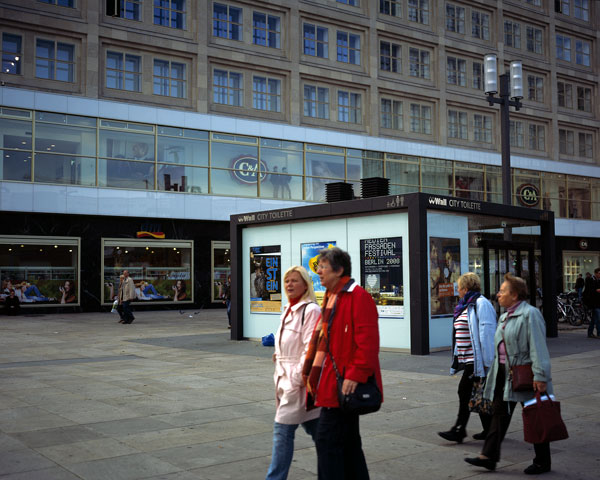
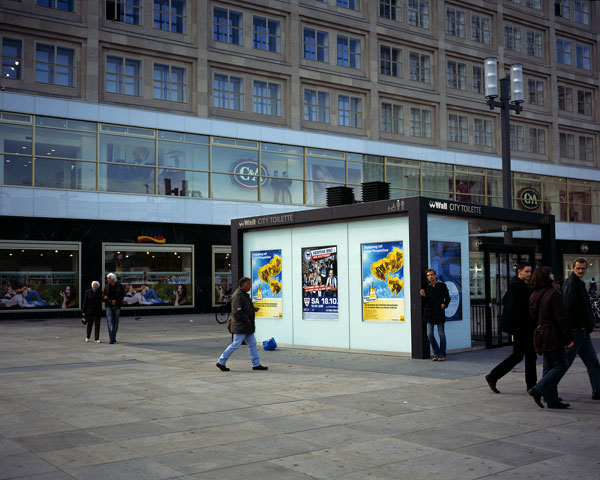
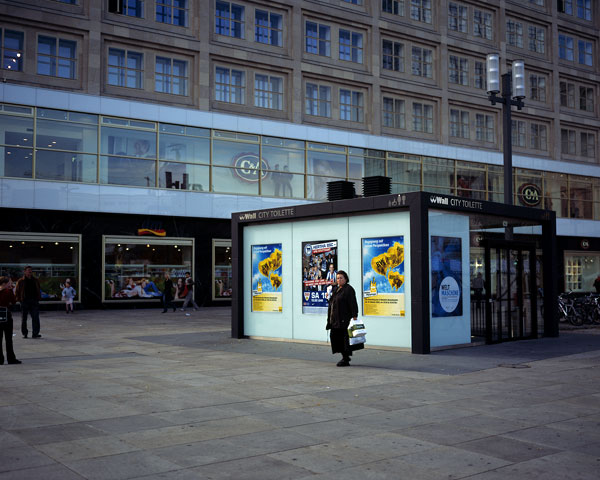
Even though I'm feeling a little less grounded than usual lately, I am enjoying this period immensely. I am realizing that I can explore different media without leaving photography behind. I think that is what is so exciting about making art in the 21st century. We have been released from the confines of our pigeon-holed labels as artists and are able to explore what we want. I'm sure there are many reasons for this but I see two major ones worth mentioning.
First, technology has been a great equalizer for many artists. Learning a few creative programs opens up whole worlds of possibilities that were only accessible to highly trained professionals in the field a few decades ago. Many of these programs work with similar formats making learning new programs that much easier. A great many of my friends and colleagues in the photo field also work in video with programs like Final Cut and even iMovie. Graphic design and 3D design has been made more accessible through programs like Illustrator, Sketchup, Rhino and Maya.
Secondly, the post-modern notion that the art can be conceived by the artist and produced by someone else has been instrumental in broadening the creative scope of contemporary artists. We all recognize our limitations and that we can't be experts at everything. I'm sure some would argue that a photographer has no business making videos or sculptures, and there may be some truth to that. But we are in an age where art can look like so many different things. Some may require machines to produce them(Jeff Koons industrially produced sculptures, for instance) while others are so complex or grandiose that they require teams of experts (Mathew Barney's Cremaster series comes to mind). Not only has this become common practice these days but it has become accepted.
More and more, I have been encouraging my students to learn more programs, to think beyond photography, to watch films, keep up on painting trends and look for work done in new media. This is a controversial issue, as many are reluctant to give up their label as an integral part of their identity as painter, photographer, sculptor, etc.. I have been called pretentious to my face by former photography professors for referring to myself as an artist rather than a photographer. I think this is changing and I hope we are progressing to a point where these categories become less and less relevant.
In theory, this should increase creative freedom for all artists, photographic and otherwise. Of course, it also means that there will be a good number of people working in media they don't understand. It is unavoidable that a lot of crap will be produced but it is the job of the art system to determine what is crap and what is not. The cream should still rise to the top (I'm well aware that it doesn't always work this way).
I am thrilled to be working in the artistic field right now. I think it is a very exciting and liberating time to be an artist. I'm very thankful that I have the creative outlets that I do - and I still can't draw.
MS
